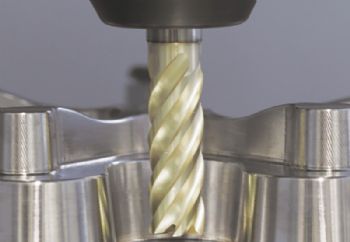
The Bromsgrove-based tooling company Walter GB Ltd (
www.walter-tools.com) says that manufacturing companies can “cash in on the benefits of high-dynamic milling”.
It cites higher process reliability plus faster and more-cost-effective cutting by using higher speeds and feeds, as well as reduced ‘free travel’ of the milling cutter — and longer tool life.
Indeed, Walter says that compared to high-performance cutting (HPC), high-dynamic cutting (HDC) offers advantages that can be achieved when milling components of every size and in all materials.
The company says the main differences between conventional HPC and HDC are in the movement of the cutter and the forces generated.
“During HPC milling, the tool takes relatively small depths of cut; during HDC milling, the machine and its CAD/CAM functionality adapt the tool-paths so that the tool ‘delineates’ during machining to the shape of the workpiece and takes greater depths of cut.
“The tool engagement angle is usually very large during HPC milling, so the process forces are high, which not only creates significant tool wear but also places stress on the machine spindle.
"The tool engagement angle for HDC is normally small, so the forces on the tool and machine are much lower. The resulting higher cutting parameters, less free travel and increased process stability result in a much higher metal removal rate for HDC milling.”
Walter says the cornerstones of HDC are the tool, the machine, the CAD/CAM system and the workpiece, adding that the strategy is successful only when all four are in synchronisation.
The company says the cutting values (the maximum permissible radial width of cut and engagement angle) are determined by the material, while workpiece geometry has a direct bearing on the length of cut and tool diameter.
“The CAD/CAM software calculates all important parameters such as milling direction, optimum path guidance, adherence to the defined maximum engagement angle and average chip thickness, then adapts them to the application.
“Tool selection is based on the machining operation and the parameters required by the material.”
Walter says it continually works closely with CAD/CAM system suppliers and its customers to find optimum solutions to individual milling tasks.